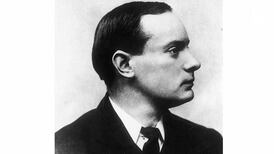The greatest natural disaster in the history of the United States happened on September 8th,1900. That day, a powerful hurricane devastated the city of Galveston in Texas, killing more than 6,000 women, men and children.
I first heard about this cataclysm as a boy when we were visiting a farm near Thurles in Co Tipperary. Our elderly neighbour, Matt Dan Ryan, was sitting by the fire with a heavy rug over his lap. He had red eyelids and a gravelly voice. He pointed up to a dim black and white photograph in a frame on the wall. It was of a nun. It was someone dear to him, though I cannot remember the exact relationship. I certainly do remember the tears in his eyes as he told us she was among a group of nuns and orphans who climbed up to a high place in the building as the hurricane-driven waters kept rising then sweeping them all away.
Years later, when I found myself wandering around Galveston, I came across a small commemorative plaque dedicated to the 10 Sisters of Charity and 90 orphans who had perished near there. One name was that of a Sister Elizabeth Ryan and I wondered if she was the nun in the framed picture in the farmhouse in Tipperary. I was told much later that it was most likely her.
In 1900 Galveston, which was named after Bernardo de Galvez the one-time Spanish governor of the area, was a thriving island city. Joined to the mainland by a causeway, it had the advantage of a deepwater harbour. Hundreds of ships unloaded and loaded all kinds of cargo, serving the booming Texan economy. Trade and commerce generated good living for many in the city. Its population was more than 37,000 and growing rapidly, with housing and new commercial buildings being built across the island.
Far away, so close – Fionnuala Ward on measuring distance
The Derry man who influenced George Washington and Alexander Hamilton - Brian Maye on Hercules Mulligan
The BBC’s national question: Frank McNally on Edna O’Brien and ‘the North of Ireland’
Dictionary on the Double – Frank McNally on the enduring literary life of Patrick Dinneen
Galveston had been a major port in the US for decades. It was a significant entry point for immigrants from Europe. Thousands had arrived by sea, seeking a new life and opportunities in the US. Most moved on and made good in the region but, like other US cities, there were some places of poverty and deprivation where poor health was common. Some years before, the city had been afflicted by an outbreak of yellow fever that killed many. Some children were left without parents.
The needy were largely dependent on the help of voluntary groups. The Catholic religious order of nuns, the Sisters of Charity, arrived in 1866 in response to a request by the local bishop. They set up St Mary’s infirmary the following year to care for the sick and infirm. They later founded an orphanage to look after parentless girls and boys. By 1900 there were some 90 orphans there.
The Great Storm of 1900 began as a tropical cyclone in the near Atlantic, then moved across the Caribbean islands, growing in strength. As it crossed the Gulf of Mexico it had become a destructive hurricane. By the time it smashed into Galveston it was generating a storm surge of huge waves that swept through the low-lying city.
As the waters rose at St Mary’s orphanage, the 10 nuns gathered the children and took them up to the highest part of the building, near the roof area. Using clotheslines, each sister tied herself to six or seven children, hoping they could hold together until the waves subsided. Unfortunately, they were overpowered by the waters and swept away. All were drowned except three of the boys. It took weeks to retrieve the bodies of all who had died. Nuns and children were buried where they were found.
The hurricane destroyed 7,000 buildings, including 3,600 homes. Every dwelling in the city suffered some damage and 10,000 people were left homeless.
It took 12 years for the citizens and authorities to restore the city to some of its former prestige. An important feature was the laying down of a high, protective sea wall, stretching across five miles – an impressive bulwark. .
However, in the aftermath of the storm, Galveston lost much of its commercial appeal. Business began to move up the wide canal to the flourishing city of Houston and industry went with it. Galveston never recovered its trading pre-eminence and is now mainly a tourist centre.
The Sisters of Charity established another orphanage, which ran until 1967. By that time the care of dependent children had changed from institutions to foster homes.
On the 100th anniversary of the great storm, a bronze statue was unveiled at the sea wall. It shows a man with one arm protectively around his wife and child while his face and other arm are raised to the heavens in hope of a deliverance that never came.














